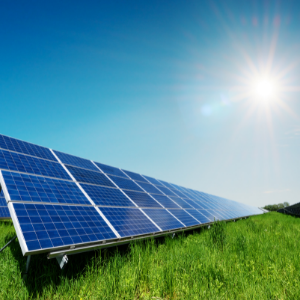By Debbie Evans

The best watt is a negawatt, or negative watt—a watt not generated because of increased energy efficiency or reduced consumption. (The term negawatt was coined by physicist Amory Lovins, cofounder and Chairman Emeritus of the Rocky Mountain Institute.)
Florida Power and Light (FPL) has two programs—Solar Now and Solar Together—where customers can make monthly, nonrefundable contributions to FPL’s solar projects. With both programs, a customer is simply a participant. FPL alone owns the solar facilities. You can subscribe to one or both programs, and you can cancel your subscription at any time. However, you will not receive a refund of your subscription fees. In addition, subscribers cannot use their subscriptions to claim tax deductible charitable contributions or renewable energy tax credits.
The two programs operate differently. Each has both positive and negative aspects that a customer may wish to consider before participating.
Solar Now
Solar Now facilities are solar canopies over parking spaces or solar “trees.” Although small, no one can “plug-in” at these locations; all generated electricity flows to the grid where it mixes with electricity produced by fossil fuel and nuclear plants.
The Florida Public Service Commission (PSC) has given permission for the Solar Now program to exist only until December 2025.
Solar Together
This program is a bit controversial. FPL received approval to build 20 solar plants of 74.5 megawatts each, totaling 1490 megawatts. This settlement agreement was opposed by the Office of Public Counsel, which represents the general public before the PSC.
Electricity from the Solar Together facilities flows to the grid. Although Solar Together facilities are large, they are not subject to the Power Plant Siting Act. FPL’s current 32 green field solar facilities average close to 500 acres per site. As a result of this year’s legislative session, local governments must now permit solar facilities in all agricultural land use categories in their comprehensive plans. This has the potential to remove thousands of acres of agricultural land from farming production. As stated in FPL’s Energy News of January 2021, their fuel mix is overwhelmingly natural gas (72.6%) and nuclear (21.9%). Even with its 30 million photovoltaic panels by 2030 plan, natural gas and nuclear plants will still make up the bulk of FPL’s generation in 2030.
Solar Together subscribers receive monthly credits, but these credits can vary depending on the amount of electricity generated by the solar facilities. However, while the subscription charge remains constant, the subscription credits increase annually.
Finally, the renewable energy certificates (RECs) from Solar Together facilities cannot be marketed because Florida does not have a renewable portfolio standard. Subscribers may request that FPL retire their portion of RECs, showing that the renewable energy has been used.
Other Options
One of the biggest concerns with these programs is that FPL customers are already paying for solar projects without necessarily opting into them. The Florida Supreme Court in the case of Florida Industrial Power Users Group v. Julie Immanuel Brown, et al, etc. in 2019 ruled that the PSC was acting within its authority when it granted FPL the right to recover costs associated with the construction of several solar power plants. Called a Solar Base Rate Adjustment (SoBRA), it is paid by all FPL customers.
There are other ways customers can get a return on their energy investments:
- Participate in FPL’s On Call interruptible service load management program, which permits FPL to interrupt electrical service to certain appliances for a limited time when there is an emergency. There is no monetary contribution required and bill credits are received monthly.
- Improve energy efficiency. Buy and use energy-efficient lighting products and appliances, increase the amount of ceiling insulation in homes and businesses, repair any leaky air conditioning ducts, and practice energy-conserving behaviors. The goal should be to live and work in Net Zero Energy Buildings, which produce the energy they consume. Each customer should try to make as many energy-efficiency improvements to their homes and businesses as possible before adding photovoltaics panels to rooftops. Get ideas for energy efficiency improvements from the Florida Solar Energy Center Research Center.
- Address climate change and make our communities better places to live. Donate to in-state charitable organizations such as the Solar and Energy Loan Fund and Habitat for Humanity. Our communities need to be resilient, and everyone deserves sustainable, affordable housing.
No matter what, the best watt is still a negawatt.